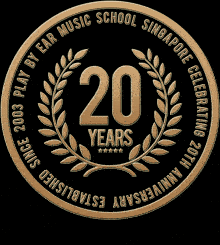A person has perfect pitch if they can almost immediately identify any note or sound without needing any other note for reference. This means that a person with perfect pitch can instantly say what notes are being played on any instrument. This type of person can also identify the exact pitch of everyday sounds like door bells and car horns. It may seem impossible, but this rare trait does exist among some lucky people. Even though most people with perfect pitch end up as musicians, there are others who many not realize it and take a different path.
Relative pitch, on the other hand, requires a reference note for comparison to identify the note. If a person with relative pitch listens to a given note and is given its name, then, using that reference, they can recognize or produce other notes by ear, just as if they had perfect pitch.
Despite their similarities, relative and perfect picture are completely different hearing skills. By no means are musicians with relative pitch inferior to those with perfect pitch, as perfect pitch is certainly not a prerequisite to becoming a great musician. Relative pitch is sometimes even more useful for musicians, especially when it comes to improvisation and playing by ear. Of course, if one has both relative and perfect pitch then they are in the best of all possible worlds. People with perfect pitch must still rely on their relative pitch to play by ear. Plus, perfect pitch doesn’t necessarily mean that one understands the relationship between notes even though they may understand the notes themselves.
Relative pitch is absolutely necessary for playing by ear because any piece of music may be played in any of 12 different keys while still having the same melody. Music is, fundamentally, relative. If one can use relative pitch to play by ear, they are actually using solfege, better known as Do Re Mi Fa So La Ti Do. Some musicians may use numbers (1,2,3, etc.) to identify the notes’ relationships in the scale, but they are essentially the same. Solfege forms a framework for all of music, allowing musicians to identify notes by the relationship of their intervals. For instance, we can play Bah Bah Black Sheep in any of the 12 keys, but they all map out in the same way:
By using solfege, we can play the same song in all 12 keys. This shows that, to play by ear, a musician has to identify each note in comparison to the rest of the song. This is why understanding the relationship between notes or chords is so crucial.
